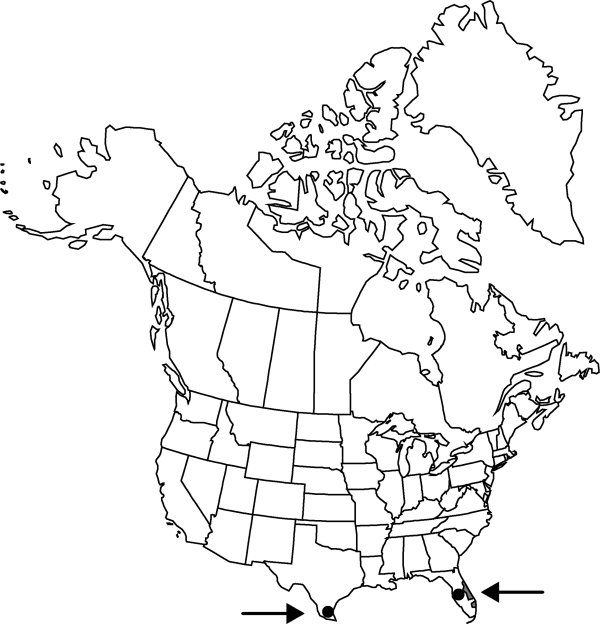Pereskia aculeata
Gard. Dict. ed. 8. 1768.
Shrubs or vines, clambering, 3–10 m. Stems to 3 cm diam., spiny; areoles to 15 mm diam., largest on basal portion of stem. Leaves lanceolate to ovate or oblong, 4.5–11 × 1.5–5 cm, 0.5–1 mm thick. Spines of 2 kinds; primary spines (= first-formed) 2 per areole, recurved, clawlike, 4–8 mm; secondary spines to 25 per older areole, straight, 10–35 mm. Flowers to 70 in terminal or lateral inflorescences, fragrant, 3 × 2.5–5 cm; pedicels 5–15 mm; tepals perigynous; scales and areoles on prominent to inconspicuous tubercles; perianth whitish to light pink. Fruits yellow to orange, spheric, not angled, 40 × 15–25 mm, never proliferating. Seeds lenticular, 4.5–5 mm diam., glossy. 2n = 22.
Phenology: Flowering summer–fall (Aug–Oct).
Habitat: Disturbed shell middens (Fla), riparian woodlands with fine, sandy loam (Tex.)
Elevation: 0-50 m
Distribution

Introduced; Fla., Tex., West Indies, South America
Discussion
Pereskia aculeata is cultivated as an ornamental, both for its edible fruits and fragrant flowers (though the scent is considered unpleasant by some). The species has escaped from cultivation in seven counties in Florida: Brevard, Dade, Indian River, Manatee, Highlands, St. Lucie, and Palm Beach, and it is established in Willacy County, near the southernmost tip of Texas (J. Ideker 1996).
Selected References
None.
Lower Taxa
"broad" is not a number.
